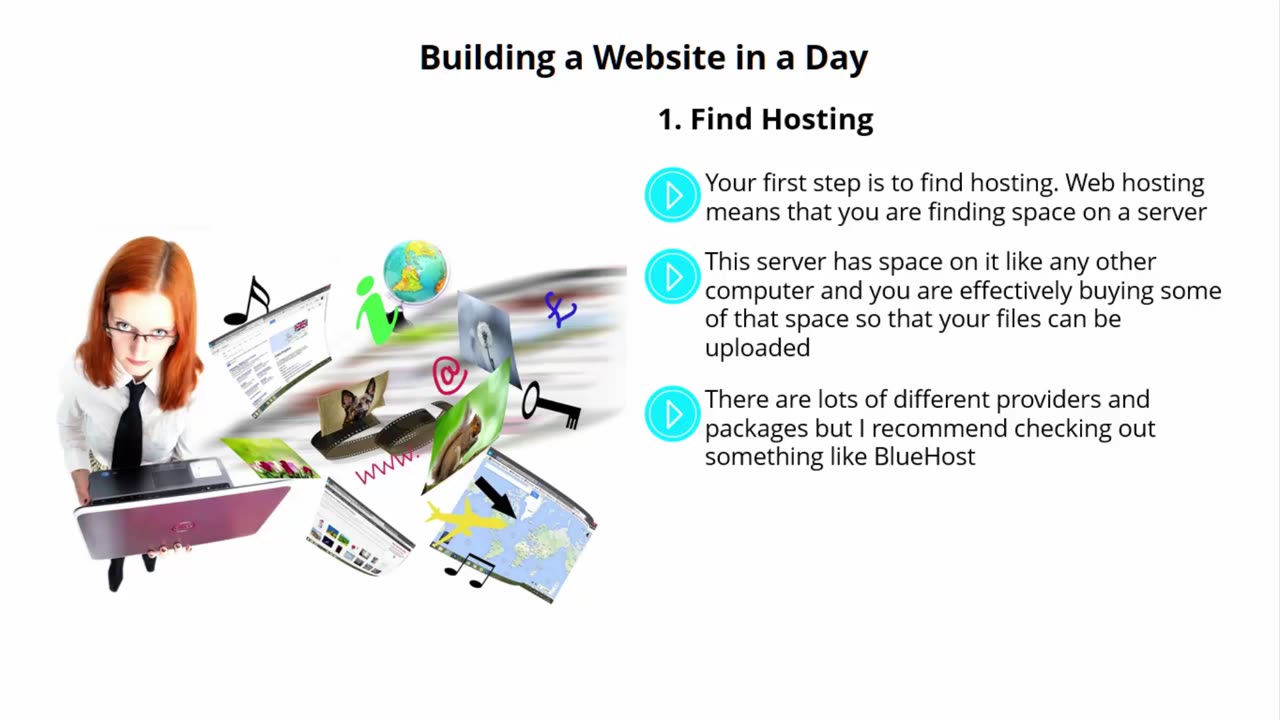Premium Only Content

Building A Website
Planning: Begin by defining the purpose and goals of the website. Consider the target audience, desired features and functionality, and the overall user experience. Create a sitemap to outline the structure and navigation of the site.
Domain Name and Hosting: Choose a domain name that reflects the brand or business and register it with a domain registrar. Select a web hosting provider that meets the technical requirements of the website and offers reliable performance and security.
Design: Design the layout, color scheme, typography, and visual elements of the website to align with the brand identity and appeal to the target audience. Create wireframes and mockups to visualize the design before proceeding to development.
Development: Build the website using coding languages such as HTML, CSS, and JavaScript, or utilize a content management system (CMS) like WordPress, Joomla, or Drupal. Develop responsive and mobile-friendly design to ensure compatibility across various devices and screen sizes.
Content Creation: Create compelling and relevant content for the website, including text, images, videos, and other multimedia elements. Optimize content for search engines (SEO) to improve visibility and attract organic traffic.
Testing: Thoroughly test the website across different browsers, devices, and operating systems to ensure functionality, performance, and compatibility. Identify and fix any bugs, errors, or usability issues.
Launch: Once the website is complete and tested, launch it to the public. Set up analytics tools to monitor website traffic, user behavior, and other key metrics. Implement tracking codes and configure goal tracking to measure the effectiveness of the website.
Optimization: Continuously optimize the website for performance, speed, security, and SEO. Regularly update content, add new features, and address user feedback to enhance the user experience and achieve the website's goals.
-
 2:24:17
2:24:17
Barry Cunningham
6 hours agoFOR PRESIDENT TRUMP WILL TAKE NO PRISONERS AND THE LIBS SHOULD EXPECT NO MERCY!
99K61 -
 1:08:41
1:08:41
Savanah Hernandez
6 hours agoCharlie Kirk Was Our Bridge And The Left Burned It
51.8K42 -
 1:59:01
1:59:01
Flyover Conservatives
9 hours agoFinancial Web Behind Charlie Kirk's Murder with Mel K | Silver On It's Way to $50 | FOC Show
63.4K3 -
 2:36:19
2:36:19
We Like Shooting
17 hours ago $1.12 earnedWe Like Shooting 628 (Gun Podcast)
41.9K -
 1:09:26
1:09:26
Glenn Greenwald
8 hours agoTrump's Shifting Immigration and H-1B Policies: With Journalist Lee Fang and Political Science Professor Ron Hira | SYSTEM UPDATE #515
175K37 -
 13:09:23
13:09:23
LFA TV
1 day agoLFA TV ALL DAY STREAM - MONDAY 9/15/25
261K64 -
 54:12
54:12
Donald Trump Jr.
7 hours agoCharlie's Vision. Our Future. | TRIGGERED Ep274
205K124 -
 1:03:35
1:03:35
BonginoReport
8 hours agoKirk’s Alleged Killer Dating Hateful Transgender??? - Nightly Scroll w/ Hayley Caronia (Ep.134)
132K153 -
 1:01:12
1:01:12
The Nick DiPaolo Show Channel
10 hours agoKirk Assassination Exposes Insane Left | The Nick Di Paolo Show #1793
105K29 -
 1:48:38
1:48:38
The Mike Schwartz Show
9 hours agoTHE MIKE SCHWARTZ SHOW Evening Edition 09-15-2025
59.7K13